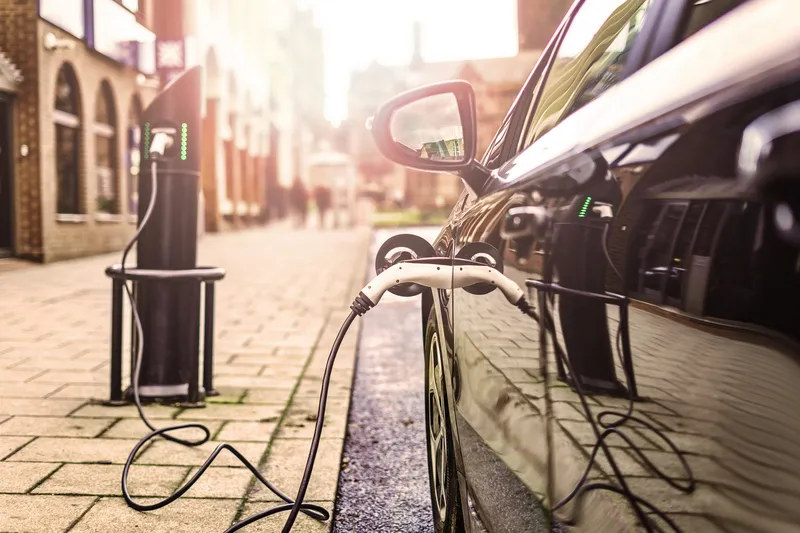A new report from IDTechEx Research notes that autonomous vehicles need no pilot, not even one in reserve. Many truly autonomous vehicles are unmanned mobile robots prowling everywhere from the ocean depths to nuclear power stations, the upper atmosphere and outer space. They create billion dollar businesses such as aircraft and airships aloft for five to ten years on sunshine alone carrying out surveillance or beaming the internet to the 4.5 billion people who lack it.
Independence of energy and electri
November 1, 2016
Read time: 4 mins
A new report from 6582 IDTechEx Research notes that autonomous vehicles need no pilot, not even one in reserve. Many truly autonomous vehicles are unmanned mobile robots prowling everywhere from the ocean depths to nuclear power stations, the upper atmosphere and outer space. They create billion dollar businesses such as aircraft and airships aloft for five to ten years on sunshine alone carrying out surveillance or beaming the internet to the 4.5 billion people who lack it.
Independence of energy and electric drivetrains are closely related to this: many land, water and airborne autonomous vehicles are already energy independent and electric, making the autonomy task easier.
The new report, Autonomous Vehicles: Land, Water, Air 2017-2037, looks at the whole subject in a balanced manner revealing how the electric vehicle business at over US$0.7 trillion in 2017 will include many new autonomous forms creating large businesses for both the vehicles and their components. On the other hand, it shows how part of this story is the arrival of peak internal combustion engine, peak lead acid battery and peak car within 15 years causing mayhem in the industries involved.
Dr Peter Harrap of IDTechEx questions how Tesla can talk of its ‘autopilot’ when you have to cling on to the steering wheel at all times and take over in an instant. We note that suppliers plan to sell a lot of autonomous cars to private individuals yet 70 per cent of us will live in cities soon where cars, autonomous or not, will be banned or severely dissuaded from entering. He asks whether the necessary price increases can stick for private cars becoming autonomous and whether people really want them but we note a host of autonomous vehicle applications where premium pricing will be no problem at all, such are the benefits.
Harrap says the report reveals the many very different reasons for adoption of autonomous vehicles in commercial, industrial, military, marine, aerospace and other applications and the very different degree of difficulty in achieving what is needed. How to cope with impediments: insurance, legal, privacy, multiple road use, cost reducing the hardware and software and making it more capable? For example, fully autonomous cars are promised by many car makers around 2020 and widespread adoption is predicted by them for 2025 but they cannot recognise a policewoman jumping out or obey her instructions: they will simply stop and cause the mother of all road jams in most cases. LIDAR is promoted as essential yet it typically cannot even read a road sign. Will the biomimetic approach of minimal sensors and superb sensor fusion software and data management prevail or are we headed for a burgeoning amount of hardware of increasing sophistication? Which types of electric vehicle - land water and air - are most promising for autonomy and when? What are the lessons of combining autonomy of navigation, task and energy and where do these vehicles exist today? Which autonomy developers are showing most promise? Where is the money being spent? Which projects will end in tears and where are things on the hype curve today? Why are search-and-rescue and agriculture such promising applications and what comes next?
Serious issues must not be swept under the carpet. The programmer of the autonomous vehicle may make it act and react in the interests of society as a whole, for example killing the minimum number of people in an accident rather than acting in the interests of any passengers. Which is the right approach? The programmer may make it act in the interests of certain groups such as insurance companies or governments and this may not be transparent to the purchaser and operator of the vehicle. Which robot vehicles form a good escape route for car makers seeing car sales collapse?
Soon all movements of electric and hybrid vehicles in China will be monitored by the government in real time including who is driving them. Will that extend to knowing in real time the identity and location of all the passengers in the robot taxis that replace them as we progress to 80 per cent of us living in cities in 2050? The threat from cyber crime is terrifying but there is good news too. Autonomous Vehicles Land, Water, Air 2017-2037 addresses all the challenges and opportunities.
Independence of energy and electric drivetrains are closely related to this: many land, water and airborne autonomous vehicles are already energy independent and electric, making the autonomy task easier.
The new report, Autonomous Vehicles: Land, Water, Air 2017-2037, looks at the whole subject in a balanced manner revealing how the electric vehicle business at over US$0.7 trillion in 2017 will include many new autonomous forms creating large businesses for both the vehicles and their components. On the other hand, it shows how part of this story is the arrival of peak internal combustion engine, peak lead acid battery and peak car within 15 years causing mayhem in the industries involved.
Dr Peter Harrap of IDTechEx questions how Tesla can talk of its ‘autopilot’ when you have to cling on to the steering wheel at all times and take over in an instant. We note that suppliers plan to sell a lot of autonomous cars to private individuals yet 70 per cent of us will live in cities soon where cars, autonomous or not, will be banned or severely dissuaded from entering. He asks whether the necessary price increases can stick for private cars becoming autonomous and whether people really want them but we note a host of autonomous vehicle applications where premium pricing will be no problem at all, such are the benefits.
Harrap says the report reveals the many very different reasons for adoption of autonomous vehicles in commercial, industrial, military, marine, aerospace and other applications and the very different degree of difficulty in achieving what is needed. How to cope with impediments: insurance, legal, privacy, multiple road use, cost reducing the hardware and software and making it more capable? For example, fully autonomous cars are promised by many car makers around 2020 and widespread adoption is predicted by them for 2025 but they cannot recognise a policewoman jumping out or obey her instructions: they will simply stop and cause the mother of all road jams in most cases. LIDAR is promoted as essential yet it typically cannot even read a road sign. Will the biomimetic approach of minimal sensors and superb sensor fusion software and data management prevail or are we headed for a burgeoning amount of hardware of increasing sophistication? Which types of electric vehicle - land water and air - are most promising for autonomy and when? What are the lessons of combining autonomy of navigation, task and energy and where do these vehicles exist today? Which autonomy developers are showing most promise? Where is the money being spent? Which projects will end in tears and where are things on the hype curve today? Why are search-and-rescue and agriculture such promising applications and what comes next?
Serious issues must not be swept under the carpet. The programmer of the autonomous vehicle may make it act and react in the interests of society as a whole, for example killing the minimum number of people in an accident rather than acting in the interests of any passengers. Which is the right approach? The programmer may make it act in the interests of certain groups such as insurance companies or governments and this may not be transparent to the purchaser and operator of the vehicle. Which robot vehicles form a good escape route for car makers seeing car sales collapse?
Soon all movements of electric and hybrid vehicles in China will be monitored by the government in real time including who is driving them. Will that extend to knowing in real time the identity and location of all the passengers in the robot taxis that replace them as we progress to 80 per cent of us living in cities in 2050? The threat from cyber crime is terrifying but there is good news too. Autonomous Vehicles Land, Water, Air 2017-2037 addresses all the challenges and opportunities.










